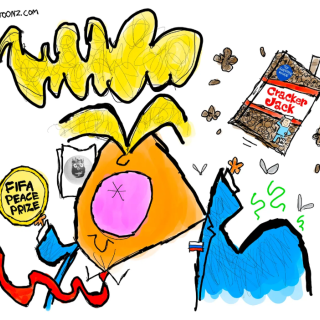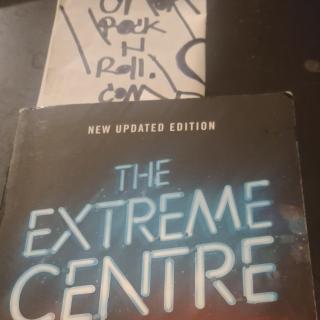Shadowbox Live has staged several music retrospectives that were both entertaining and enlightening. The result is that troupe patrons have a leg up anytime the conversation turns to Joe Cocker, Pink Floyd or even the Beatles.
With its current musical revue, Front Street Funk, the emphasis is more on “entertaining” than on “enlightening.” I can’t say I walked away with much new insight into the genre that gave “Papa” a “Brand New Bag.”
Then again, that could be partly my fault. Maybe I missed some of the information the show doled out between tunes because I was so busy tapping my foot, watching fellow patrons dance and, at one point, actually dancing myself.
Yes, you heard that right: Audience members were dancing. One thing that distinguishes this show from its predecessors is that Shadowbox sets aside floor space for patrons who can’t resist the call of the syncopated beats, wah-wah guitars and joyous horns.
At the performance I attended, it took a while for the space to fill up, but it eventually did. Though they mostly did their own thing, patrons joined forces in the Electric Slide for one number. For another, a cast member organized them into a “Soul Train line” that allowed them to show off their funkiest moves.
Writer Jimmy Mak does try to impart some information about the genre, much of it borrowed from Rickey Vincent’s authoritative work Funk: The Music, the People, and the Rhythm of the One. We learn, for example, that the funk era could be divided into four “dynasties”: Unification (late ’60s), Shining Star (early ’70s), P-Funk (late ’70s) and Naked Funk (early ’80s).
So how did funk evolve over the course of those years? How is early funk different from, say, the music of the P-Funk (Pure Funk) era? The show doesn’t go into a lot of detail, though emcee Brandon Anderson does explain how the nation as a whole evolved during the same period.
By the early ’70s, he says, black culture had become synonymous with U.S. culture. Suddenly, Americans of all skin tones were dancing to—and performing—this offshoot of soul, jazz and R&B.
Though the show can’t be mistaken for a music theory class, it does offer an early introduction to the building blocks of funk: syncopated drums, a heavy bass line, wild guitars and keyboards, blaring brass. From then on, the revue functions as a master class in music appreciation, funk-style.
In all, 28 tunes are delivered by a handful of lead vocalists backed up by the Matthew Hahn-led band. Director Stev Guyer, lighting designer Aaron Pelzak, video editor David Whitehouse, choreographer Katy Psenicka and a team of costume designers make sure all are delivered with a maximum level of flash and period-appropriate style.
Several singers reveal a real affinity for the music.
On the two numbers that bookend the show, Anderson is equally at home standing in for James Brown on “Papa’s Got a Brand New Bag” and for Bruno Mars on “Uptown Funk.” Also put to good use is Noelle Grandison, who’s especially noteworthy as a substitute for Chaka Khan on “Tell Me Something Good.”
One of my favorite Shadowbox guest artists, Kevin Sweeney, plumbs the soulful depths of Bill Withers’s “Use Me” and the Gap Band’s “You Dropped a Bomb on Me.” Additional nice efforts are turned in by Edelyn Parker and Jamie Barrow, among others.
Busiest and most versatile of all is Stacie Boord, who sings the lead on everything from Curtis Mayfield’s “Superfly” to Stevie Wonder’s “Higher Ground” and Wild Cherry’s “Play That Funky Music.” For a microscopic view of Boord’s funkalicious talent, listen to her vocal inflection on “rain” in the Anne Peebles classic “I Can’t Stop the Rain.” Gorgeous.
Great songs require great sound mixing, and they generally get it, with the result that the singers and band come through with equal clarity. At the performance I attended, however, some of the mixes were less crisp in the second half. This was particularly noticeable on “Baby Love,” blunting the impact of Nikki Fagin’s belted-out vocals and Anderson, Grandison and Stephanie Shull’s backup singing.
The band, on the other hand, is terrific throughout. That’s due not only to the fine musicians but to arrangements that give each a chance to shine while demonstrating the spirit-lifting power that made funk such a beloved and influential force in American music.
Front Street Funk continues through Aug. 11 at Shadowbox Live, 503 S. Front St., Columbus. Show times are 7:30 p.m. Wednesday-Thursday and 7 p.m. Sunday. Running time: 2 hours, 10 minutes (including intermission). Tickets are $20-$25. 614-416-7625 or www.shadowboxlive.org.



